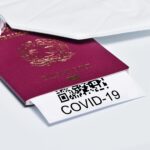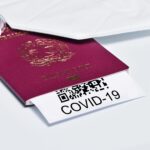Strategic Steps for Candidates Navigating the Evolving NLPNP Landscape
In light of the recent low Newfoundland and Labrador PNP draw, prospective immigrants must adopt a proactive and strategic approach. The first order of business should be a thorough review and enhancement of their existing EOI profile. This includes retaking language exams to achieve higher scores, exploring further education to gain additional credentials, or acquiring more relevant work experience. Candidates should also actively seek employment opportunities within the province. A genuine job offer from a Newfoundland and Labrador employer is one of the most powerful assets in a PNP application, often being the determinative factor for receiving an invitation. Networking through online platforms, connecting with recruiters, and directly applying to companies in the province are essential activities. Beyond the NLPNP, it is imperative to create a profile for the federal Express Entry system, if eligible. A provincial nomination from Newfoundland and Labrador can add 600 Comprehensive Ranking System (CRS) points to an Express Entry profile, essentially guaranteeing an Invitation to Apply for permanent residence. Finally, a deep dive into the Atlantic Immigration Program (AIP) is highly recommended. This program is specifically designed to help employers in Atlantic Canada hire foreign skilled workers and international graduates. Securing a job offer from an AIP-designated employer in Newfoundland and Labrador opens a direct and effective pathway that is separate from the provincial EOI pool, providing a valuable alternative for securing a future in the province.
Frequently Asked Questions
What is the Newfoundland and Labrador Provincial Nominee Program (NLPNP)?The NLPNP is an economic immigration program that allows the province of Newfoundland and Labrador to nominate individuals with the specific skills and experience needed in the local economy for permanent residence. The program includes several streams, such as the Skilled Worker and International Graduate categories, designed to attract and retain talent. What does a low number of Invitations to Apply (ITAs) mean for candidates?
A low number of ITAs generally signifies increased competition within the application pool. It may indicate that the province is nearing its annual nomination quota, focusing on very specific occupations, or managing its application processing capacity, potentially leading to a higher score requirement for receiving an invitation. How can a candidate improve their chances for an NLPNP invitation?
Candidates can improve their chances by maximizing their Expression of Interest (EOI) score through higher language test results, further education, and relevant work experience. Actively seeking and securing a valid job offer from a provincial employer is one of the most effective ways to strengthen a profile and increase the likelihood of being invited. What is the Atlantic Immigration Program (AIP)?
The Atlantic Immigration Program is a federal immigration pathway that works in partnership with the four Atlantic provinces, including Newfoundland and Labrador. It is an employer-driven program that helps designated employers hire foreign nationals for jobs they haven’t been able to fill locally, providing a direct route to permanent residence for successful applicants.
Talk to us to find out more. ->
The content above is not intended to provide legal advice or opinions of any kind and may not be used for professional or commercial purposes.
Heightened Competition: With a smaller number of ITAs issued, the competition among candidates in the NLPNP pool automatically intensifies. Only those with the most competitive profiles and highest EOI scores are likely to receive an invitation.The Necessity of a Strong Profile: This draw highlights the critical importance of optimizing every aspect of an EOI profile. Candidates must ensure their language test results, educational credential assessments, and work experience are accurately represented to claim all possible points.Increased Value of a Job Offer: Having a valid job offer from a Newfoundland and Labrador employer becomes an even more significant advantage. It not only boosts a candidate’s score but also demonstrates a direct connection to the provincial labour market.Exploring Alternative Pathways is Crucial: Candidates are strongly encouraged to investigate other immigration programs, particularly the Atlantic Immigration Program (AIP), as a parallel or alternative strategy to increase their chances of success.Potential for Future Targeted Draws: The small size of this draw could indicate a shift towards more niche, occupation-specific draws in the future, targeting candidates who can fill immediate and critical labour gaps.Strategic Steps for Candidates Navigating the Evolving NLPNP Landscape
In light of the recent low Newfoundland and Labrador PNP draw, prospective immigrants must adopt a proactive and strategic approach. The first order of business should be a thorough review and enhancement of their existing EOI profile. This includes retaking language exams to achieve higher scores, exploring further education to gain additional credentials, or acquiring more relevant work experience. Candidates should also actively seek employment opportunities within the province. A genuine job offer from a Newfoundland and Labrador employer is one of the most powerful assets in a PNP application, often being the determinative factor for receiving an invitation. Networking through online platforms, connecting with recruiters, and directly applying to companies in the province are essential activities. Beyond the NLPNP, it is imperative to create a profile for the federal Express Entry system, if eligible. A provincial nomination from Newfoundland and Labrador can add 600 Comprehensive Ranking System (CRS) points to an Express Entry profile, essentially guaranteeing an Invitation to Apply for permanent residence. Finally, a deep dive into the Atlantic Immigration Program (AIP) is highly recommended. This program is specifically designed to help employers in Atlantic Canada hire foreign skilled workers and international graduates. Securing a job offer from an AIP-designated employer in Newfoundland and Labrador opens a direct and effective pathway that is separate from the provincial EOI pool, providing a valuable alternative for securing a future in the province.
Frequently Asked Questions
What is the Newfoundland and Labrador Provincial Nominee Program (NLPNP)?The NLPNP is an economic immigration program that allows the province of Newfoundland and Labrador to nominate individuals with the specific skills and experience needed in the local economy for permanent residence. The program includes several streams, such as the Skilled Worker and International Graduate categories, designed to attract and retain talent. What does a low number of Invitations to Apply (ITAs) mean for candidates?
A low number of ITAs generally signifies increased competition within the application pool. It may indicate that the province is nearing its annual nomination quota, focusing on very specific occupations, or managing its application processing capacity, potentially leading to a higher score requirement for receiving an invitation. How can a candidate improve their chances for an NLPNP invitation?
Candidates can improve their chances by maximizing their Expression of Interest (EOI) score through higher language test results, further education, and relevant work experience. Actively seeking and securing a valid job offer from a provincial employer is one of the most effective ways to strengthen a profile and increase the likelihood of being invited. What is the Atlantic Immigration Program (AIP)?
The Atlantic Immigration Program is a federal immigration pathway that works in partnership with the four Atlantic provinces, including Newfoundland and Labrador. It is an employer-driven program that helps designated employers hire foreign nationals for jobs they haven’t been able to fill locally, providing a direct route to permanent residence for successful applicants.
Talk to us to find out more. ->
The content above is not intended to provide legal advice or opinions of any kind and may not be used for professional or commercial purposes.
- Heightened Competition: With a smaller number of ITAs issued, the competition among candidates in the NLPNP pool automatically intensifies. Only those with the most competitive profiles and highest EOI scores are likely to receive an invitation.The Necessity of a Strong Profile: This draw highlights the critical importance of optimizing every aspect of an EOI profile. Candidates must ensure their language test results, educational credential assessments, and work experience are accurately represented to claim all possible points.Increased Value of a Job Offer: Having a valid job offer from a Newfoundland and Labrador employer becomes an even more significant advantage. It not only boosts a candidate’s score but also demonstrates a direct connection to the provincial labour market.Exploring Alternative Pathways is Crucial: Candidates are strongly encouraged to investigate other immigration programs, particularly the Atlantic Immigration Program (AIP), as a parallel or alternative strategy to increase their chances of success.Potential for Future Targeted Draws: The small size of this draw could indicate a shift towards more niche, occupation-specific draws in the future, targeting candidates who can fill immediate and critical labour gaps.
Strategic Steps for Candidates Navigating the Evolving NLPNP Landscape
In light of the recent low Newfoundland and Labrador PNP draw, prospective immigrants must adopt a proactive and strategic approach. The first order of business should be a thorough review and enhancement of their existing EOI profile. This includes retaking language exams to achieve higher scores, exploring further education to gain additional credentials, or acquiring more relevant work experience. Candidates should also actively seek employment opportunities within the province. A genuine job offer from a Newfoundland and Labrador employer is one of the most powerful assets in a PNP application, often being the determinative factor for receiving an invitation. Networking through online platforms, connecting with recruiters, and directly applying to companies in the province are essential activities. Beyond the NLPNP, it is imperative to create a profile for the federal Express Entry system, if eligible. A provincial nomination from Newfoundland and Labrador can add 600 Comprehensive Ranking System (CRS) points to an Express Entry profile, essentially guaranteeing an Invitation to Apply for permanent residence. Finally, a deep dive into the Atlantic Immigration Program (AIP) is highly recommended. This program is specifically designed to help employers in Atlantic Canada hire foreign skilled workers and international graduates. Securing a job offer from an AIP-designated employer in Newfoundland and Labrador opens a direct and effective pathway that is separate from the provincial EOI pool, providing a valuable alternative for securing a future in the province.
Frequently Asked Questions
What is the Newfoundland and Labrador Provincial Nominee Program (NLPNP)?The NLPNP is an economic immigration program that allows the province of Newfoundland and Labrador to nominate individuals with the specific skills and experience needed in the local economy for permanent residence. The program includes several streams, such as the Skilled Worker and International Graduate categories, designed to attract and retain talent. What does a low number of Invitations to Apply (ITAs) mean for candidates?
A low number of ITAs generally signifies increased competition within the application pool. It may indicate that the province is nearing its annual nomination quota, focusing on very specific occupations, or managing its application processing capacity, potentially leading to a higher score requirement for receiving an invitation. How can a candidate improve their chances for an NLPNP invitation?
Candidates can improve their chances by maximizing their Expression of Interest (EOI) score through higher language test results, further education, and relevant work experience. Actively seeking and securing a valid job offer from a provincial employer is one of the most effective ways to strengthen a profile and increase the likelihood of being invited. What is the Atlantic Immigration Program (AIP)?
The Atlantic Immigration Program is a federal immigration pathway that works in partnership with the four Atlantic provinces, including Newfoundland and Labrador. It is an employer-driven program that helps designated employers hire foreign nationals for jobs they haven’t been able to fill locally, providing a direct route to permanent residence for successful applicants.
Talk to us to find out more. ->
The content above is not intended to provide legal advice or opinions of any kind and may not be used for professional or commercial purposes.
- Heightened Competition: With a smaller number of ITAs issued, the competition among candidates in the NLPNP pool automatically intensifies. Only those with the most competitive profiles and highest EOI scores are likely to receive an invitation.The Necessity of a Strong Profile: This draw highlights the critical importance of optimizing every aspect of an EOI profile. Candidates must ensure their language test results, educational credential assessments, and work experience are accurately represented to claim all possible points.Increased Value of a Job Offer: Having a valid job offer from a Newfoundland and Labrador employer becomes an even more significant advantage. It not only boosts a candidate’s score but also demonstrates a direct connection to the provincial labour market.Exploring Alternative Pathways is Crucial: Candidates are strongly encouraged to investigate other immigration programs, particularly the Atlantic Immigration Program (AIP), as a parallel or alternative strategy to increase their chances of success.Potential for Future Targeted Draws: The small size of this draw could indicate a shift towards more niche, occupation-specific draws in the future, targeting candidates who can fill immediate and critical labour gaps.
Strategic Steps for Candidates Navigating the Evolving NLPNP Landscape
In light of the recent low Newfoundland and Labrador PNP draw, prospective immigrants must adopt a proactive and strategic approach. The first order of business should be a thorough review and enhancement of their existing EOI profile. This includes retaking language exams to achieve higher scores, exploring further education to gain additional credentials, or acquiring more relevant work experience. Candidates should also actively seek employment opportunities within the province. A genuine job offer from a Newfoundland and Labrador employer is one of the most powerful assets in a PNP application, often being the determinative factor for receiving an invitation. Networking through online platforms, connecting with recruiters, and directly applying to companies in the province are essential activities. Beyond the NLPNP, it is imperative to create a profile for the federal Express Entry system, if eligible. A provincial nomination from Newfoundland and Labrador can add 600 Comprehensive Ranking System (CRS) points to an Express Entry profile, essentially guaranteeing an Invitation to Apply for permanent residence. Finally, a deep dive into the Atlantic Immigration Program (AIP) is highly recommended. This program is specifically designed to help employers in Atlantic Canada hire foreign skilled workers and international graduates. Securing a job offer from an AIP-designated employer in Newfoundland and Labrador opens a direct and effective pathway that is separate from the provincial EOI pool, providing a valuable alternative for securing a future in the province.
Frequently Asked Questions
What is the Newfoundland and Labrador Provincial Nominee Program (NLPNP)?The NLPNP is an economic immigration program that allows the province of Newfoundland and Labrador to nominate individuals with the specific skills and experience needed in the local economy for permanent residence. The program includes several streams, such as the Skilled Worker and International Graduate categories, designed to attract and retain talent. What does a low number of Invitations to Apply (ITAs) mean for candidates?
A low number of ITAs generally signifies increased competition within the application pool. It may indicate that the province is nearing its annual nomination quota, focusing on very specific occupations, or managing its application processing capacity, potentially leading to a higher score requirement for receiving an invitation. How can a candidate improve their chances for an NLPNP invitation?
Candidates can improve their chances by maximizing their Expression of Interest (EOI) score through higher language test results, further education, and relevant work experience. Actively seeking and securing a valid job offer from a provincial employer is one of the most effective ways to strengthen a profile and increase the likelihood of being invited. What is the Atlantic Immigration Program (AIP)?
The Atlantic Immigration Program is a federal immigration pathway that works in partnership with the four Atlantic provinces, including Newfoundland and Labrador. It is an employer-driven program that helps designated employers hire foreign nationals for jobs they haven’t been able to fill locally, providing a direct route to permanent residence for successful applicants.
Talk to us to find out more. ->
The content above is not intended to provide legal advice or opinions of any kind and may not be used for professional or commercial purposes.
In an unexpected turn of events, the latest Newfoundland and Labrador Provincial Nominee Program (NLPNP) draw has sent ripples through the immigration community. This analysis delves into the specifics of this significant draw, explores the potential reasons behind the historically low number of invitations, and offers strategic guidance for candidates navigating this evolving landscape. Understanding these dynamics is paramount for anyone aspiring to make this vibrant Atlantic province their new home.
Table of Contents
- Decoding the Latest Newfoundland and Labrador PNP Draw Results Potential Reasons Behind the Abruptly Low Invitation Round Critical Implications: What This NLPNP Draw Means for Aspiring Immigrants Strategic Steps for Candidates Navigating the Evolving NLPNP Landscape Frequently Asked Questions
Decoding the Latest Newfoundland and Labrador PNP Draw Results
Newfoundland and Labrador recently conducted a Provincial Nominee Program (PNP) draw that has captured the attention of immigration hopefuls and professionals alike. The draw, which took place in early October, issued an astonishingly low number of Invitations to Apply (ITAs) to candidates in its Skilled Worker and International Graduate streams. This figure represents a stark departure from the consistent and more voluminous draws observed throughout the earlier part of the year, marking a significant low point for invitations in 2025. While the province does not always release the exact scores or comprehensive details for every draw, the sharp reduction in volume is the primary data point causing concern and speculation. For context, previous draws in the year consistently invited a much larger cohort of candidates, reflecting the province’s active efforts to attract skilled talent to address its demographic and labour market needs. This sudden contraction signals a potential shift in strategy or capacity, compelling a closer examination of the province’s immigration targets and processing capabilities. It is essential for applicants in the pool to understand that such fluctuations, while unsettling, can be part of a province’s dynamic approach to managing its nominee allocation and aligning immigration with real-time economic demands.
Potential Reasons Behind the Abruptly Low Invitation Round
Several factors could be at play contributing to this unusually small Newfoundland and Labrador PNP draw. One of the most plausible explanations is that the province is nearing its annual nomination allocation granted by the federal government, specifically through Immigration, Refugees and Citizenship Canada (IRCC). Provincial programs receive a set number of nominations they can issue each year. As the end of the year approaches, provinces often manage their draw sizes more conservatively to stay within this limit. Another compelling reason could be a strategic pivot towards more targeted draws. The province might be focusing on specific, high-priority occupations or sectors experiencing critical labour shortages. By issuing a small number of invitations, the NLPNP can ensure that it is selecting candidates whose profiles are in perfect alignment with the most urgent needs of the provincial economy, such as healthcare or specialized tech roles. Furthermore, administrative considerations, including processing capacity and application backlogs, cannot be overlooked. A temporary slowdown to manage existing inventory and ensure timely processing for nominated candidates is a responsible administrative measure. This approach allows the program to maintain its service standards and integrity. Finally, this could be a precursor to upcoming programmatic changes, with the province pausing larger draws as it prepares to implement new criteria or launch new streams. Such adjustments are common as provinces refine their immigration pathways to be more responsive to their economic and demographic goals.
Critical Implications: What This NLPNP Draw Means for Aspiring Immigrants
For candidates with an active Expression of Interest (EOI) in the Newfoundland and Labrador PNP pool, a draw with a very low number of invitations has several direct and indirect consequences. The most immediate effect is a likely increase in competition. With fewer spots available, the implicit score threshold to receive an invitation may rise, meaning only the highest-ranking candidates will be selected. This environment puts immense pressure on applicants to ensure their profiles are maximized to their fullest potential. It underscores the importance of every point, from language proficiency and work experience to educational credentials and connections to the province. This development also serves as a crucial reminder that relying on a single immigration pathway can be a precarious strategy. Candidates should view this as an impetus to explore all available options, including the Atlantic Immigration Program (AIP), which operates in parallel to the PNP and provides another robust route to permanent residency in the region. The AIP is an employer-driven program, meaning the primary requirement is a valid job offer from a designated employer, which can sometimes be a more direct pathway for those with in-demand skills. Below are some key takeaways from this recent draw.
- Heightened Competition: With a smaller number of ITAs issued, the competition among candidates in the NLPNP pool automatically intensifies. Only those with the most competitive profiles and highest EOI scores are likely to receive an invitation.The Necessity of a Strong Profile: This draw highlights the critical importance of optimizing every aspect of an EOI profile. Candidates must ensure their language test results, educational credential assessments, and work experience are accurately represented to claim all possible points.Increased Value of a Job Offer: Having a valid job offer from a Newfoundland and Labrador employer becomes an even more significant advantage. It not only boosts a candidate’s score but also demonstrates a direct connection to the provincial labour market.Exploring Alternative Pathways is Crucial: Candidates are strongly encouraged to investigate other immigration programs, particularly the Atlantic Immigration Program (AIP), as a parallel or alternative strategy to increase their chances of success.Potential for Future Targeted Draws: The small size of this draw could indicate a shift towards more niche, occupation-specific draws in the future, targeting candidates who can fill immediate and critical labour gaps.
Strategic Steps for Candidates Navigating the Evolving NLPNP Landscape
In light of the recent low Newfoundland and Labrador PNP draw, prospective immigrants must adopt a proactive and strategic approach. The first order of business should be a thorough review and enhancement of their existing EOI profile. This includes retaking language exams to achieve higher scores, exploring further education to gain additional credentials, or acquiring more relevant work experience. Candidates should also actively seek employment opportunities within the province. A genuine job offer from a Newfoundland and Labrador employer is one of the most powerful assets in a PNP application, often being the determinative factor for receiving an invitation. Networking through online platforms, connecting with recruiters, and directly applying to companies in the province are essential activities. Beyond the NLPNP, it is imperative to create a profile for the federal Express Entry system, if eligible. A provincial nomination from Newfoundland and Labrador can add 600 Comprehensive Ranking System (CRS) points to an Express Entry profile, essentially guaranteeing an Invitation to Apply for permanent residence. Finally, a deep dive into the Atlantic Immigration Program (AIP) is highly recommended. This program is specifically designed to help employers in Atlantic Canada hire foreign skilled workers and international graduates. Securing a job offer from an AIP-designated employer in Newfoundland and Labrador opens a direct and effective pathway that is separate from the provincial EOI pool, providing a valuable alternative for securing a future in the province.
Frequently Asked Questions
What is the Newfoundland and Labrador Provincial Nominee Program (NLPNP)?The NLPNP is an economic immigration program that allows the province of Newfoundland and Labrador to nominate individuals with the specific skills and experience needed in the local economy for permanent residence. The program includes several streams, such as the Skilled Worker and International Graduate categories, designed to attract and retain talent. What does a low number of Invitations to Apply (ITAs) mean for candidates?
A low number of ITAs generally signifies increased competition within the application pool. It may indicate that the province is nearing its annual nomination quota, focusing on very specific occupations, or managing its application processing capacity, potentially leading to a higher score requirement for receiving an invitation. How can a candidate improve their chances for an NLPNP invitation?
Candidates can improve their chances by maximizing their Expression of Interest (EOI) score through higher language test results, further education, and relevant work experience. Actively seeking and securing a valid job offer from a provincial employer is one of the most effective ways to strengthen a profile and increase the likelihood of being invited. What is the Atlantic Immigration Program (AIP)?
The Atlantic Immigration Program is a federal immigration pathway that works in partnership with the four Atlantic provinces, including Newfoundland and Labrador. It is an employer-driven program that helps designated employers hire foreign nationals for jobs they haven’t been able to fill locally, providing a direct route to permanent residence for successful applicants.
Talk to us to find out more. ->
The content above is not intended to provide legal advice or opinions of any kind and may not be used for professional or commercial purposes.







